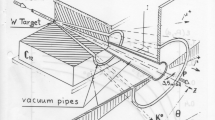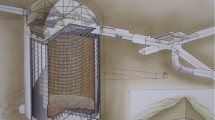Abstract.
If, as recently reported by the Super-Kamiokande collaboration, the neutrinos are massive, the heaviest one, \(\nu_H\), would not be stable and, though chargeless, could in particular decay into a lighter neutrino \(\nu_L\) and a photon by quantum loop effects. The corresponding rate is computed in the standard model with massive Dirac neutrinos as a function of the neutrino masses and mixing angles. The lifetime of the decaying neutrino is estimated to be \(\approx 10^{44}\) years for a mass \(\approx 5\times 10^{-2}\) eV. Before the mass range arising from present experiments on neutrino oscillations is definitively settled, it is still motivating to study the \(\nu_H \rightarrow \nu_L e^+ e^-\) decay; if kinematically possible, it occurs at tree level and its one-loop radiative corrections get enhanced by a large logarithm of the electron mass acting as an infrared cutoff. Thus the \(\nu_H \rightarrow \nu_L e^+ e^-\) decay largely dominates the \(\nu_H \rightarrow \nu_L \gamma\) one by several orders of magnitude, corresponding to a lifetime \(\approx 10^{-2}\) year for a mass of \(\approx 1.1\) MeV.
Similar content being viewed by others
Author information
Authors and Affiliations
Additional information
Received: 19 August 1999 / Published online: 3 February 2000
Rights and permissions
About this article
Cite this article
Ho-Kim, Q., Machet, B. & Pham, X. The decays \(\nu _H \rightarrow \nu_L \gamma\) and \(\nu_H \rightarrow \nu_L e^+ e^-\) of massive neutrinos. Eur. Phys. J. C 13, 117–123 (2000). https://doi.org/10.1007/s100520000292
Issue Date:
DOI: https://doi.org/10.1007/s100520000292




